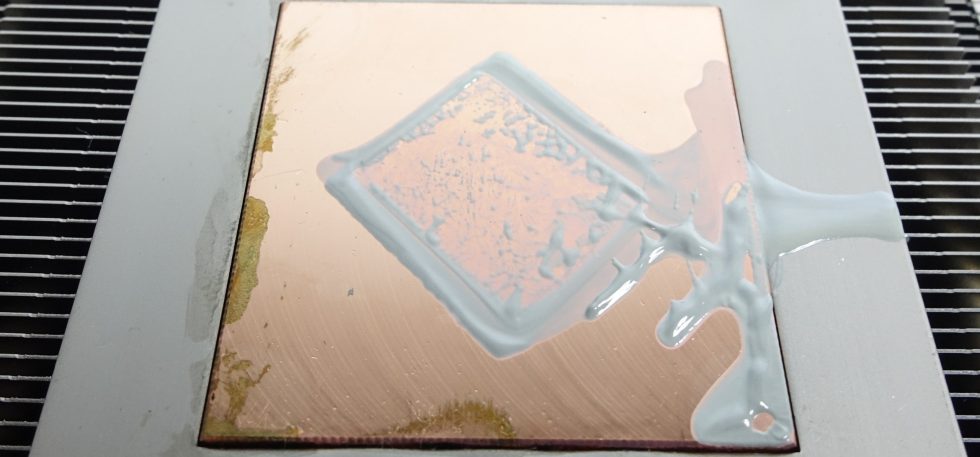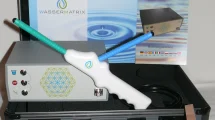Welcome to the Matrix!
So, let’s finally get to the paste! The so-called “matrix” in thermally conductive pastes refers to the basic substance or binder in which the thermally conductive particles are dispersed. This matrix is decisive for the physical, chemical and thermal properties of the thermal compound. It determines how effectively the paste can transfer heat between two surfaces, as well as its application properties, such as viscosity, durability and chemical resistance. And most people won’t know it: This matrix is usually more important and of greater significance than the heat-conducting particles that are added later.
While there are hardly any further optimization options for the heat-conducting particles, the chemistry of the matrix, i.e. the base of a paste or pad, is always good for a surprise! In thermal pastes, the matrix serves several key functions:
- Carrier for thermally conductive particles:
The matrix holds the thermally conductive particles, such as metals (silver, aluminum), ceramics (boron oxide, aluminum oxide) or carbon materials (graphite, carbon nanotubes, diamond powder), in an even distribution. These particles improve the thermal conductivity of the paste. - Heat transfer:
Although the matrix itself does not always have high thermal conductivity, it is crucial for transferring heat from the hotter to the cooler parts by forming a continuous thermal bridge between the particles and the surfaces. - Mechanical properties:
The matrix gives the thermal paste the necessary consistency and viscosity to allow easy application and form a thin, uniform layer between surfaces. These properties are important for minimizing thermal resistance. - Chemical and thermal stability:
The resistance of the matrix to chemical reactions and its ability to remain stable over a wide temperature range affect the long-term performance and reliability of the thermal compound. - Electrical insulation:
In many applications, it is important that the thermal compound is electrically insulating to prevent short circuits or electrical interference. The matrix plays a key role in ensuring this property, especially with non-metallic pastes.
The materials used for the matrix vary depending on the type of thermal paste. The choice of matrix and dispersed particles thus depends mainly on the specific application, including the required thermal conductivity, mechanical properties, chemical resistance and processability.

You can divide the matrix into several groups, the first of which is usually the group that interests the PC user the most:
- Silicone-based thermal compounds:
What we mostly use are silicone-based thermal pastes. These are widely used due to their excellent thermal and chemical stability. They consist of silicone-based polymers that are enriched with thermally conductive fillers, such as aluminum oxide or silver. Their main advantages are their durability and ability to withstand a wide range of temperatures. However, they tend to have a lower thermal conductivity compared to some other (mostly metallic and therefore electrically conductive) materials, which makes them less ideal for some applications with extremely high heat transfer requirements. Silicone-based pastes tend to be less reactive, making them ideal for applications where chemical stability is important. - Ethyl ester based thermal pastes
Esters are organic compounds formed by the reaction of an acid with an alcohol. They generally provide good lubrication and have a lower viscosity than silicones. Ethyl ester-based pastes, a less common category, utilize the organic compounds of the ester group to provide moderate to good thermal conductivity. They are useful in specific applications where chemical compatibility with certain plastics and materials is important. These pastes offer a good balance between thermal conductivity and electrical insulation, but can fall short of silicone-based pastes in terms of longevity and temperature resistance. This is because esters can oxidize or hydrolyze under certain conditions, which can affect their long-term stability. However, ester-based pastes are generally much more fluid and have a lower viscosity. This can allow for a thinner and more uniform layer, which can be beneficial in some applications. - Other non-silicone based pastes:
These can be based on a variety of materials, including synthetic oils or even water for certain non-permanent applications. -
Thermal pads:
These typically consist of a polymeric matrix material enriched with thermally conductive fillers. The matrix materials can be silicones, acrylates or polyurethanes, while the fillers can consist of ceramic particles, aluminum oxide, boron nitride, silver or graphite. The selection and ratio of the fillers to the matrix are decisive for the thermal conductivity of the pad. In contrast, thermally conductive pastes are based on a more liquid base containing a mixture of oily or silicone-containing substances with similar thermally conductive particles. Pastes fill the micro-unevenness on the surfaces more efficiently, resulting in lower thermal resistance. The special properties of the thermal pads and the differences in the matrix used compared to thermal pastes are of central importance for their application and performance. The chemical stability of the polymer matrix in pads contributes to longevity and minimizes the risk of performance degradation due to aging or thermal cycling.

Silicone-based pastes are a safe choice for many applications due to their versatility and durability, while metal- and ceramic-based pastes are preferred for applications with higher thermal requirements. Ethyl ester-based pastes can be useful in niche applications where specific material compatibilities are required. Carbon-based pastes offer innovative solutions for high-end applications that require optimal heat transfer. But I’ll talk about these thermally conductive particles in a moment. But on the next page I will first deal with the silicone-based carrier materials and then go into more detail on another page when it comes to temperatures far below zero. But that’s another story altogether…
Hybrid mixtures of silicone and ester
Mixing silicone and ester as binders in thermal pastes is theoretically quite possible, but there are some important considerations that need to be taken into account. Chemical compatibility between silicone and ester-based materials must be ensured. Poor compatibility can lead to separation or chemical reactions that affect the performance of the thermal compound. It is crucial to achieve a uniform mixture. Silicones and esters can have different viscosities and densities, which can lead to challenges in producing a stable and homogeneous mixture.
The thermal properties of the resulting mixture must be investigated. Thermal conductivity, temperature stability and long-term performance could be affected by the mixture. The physical properties such as viscosity, adhesion and consistency of the paste must also be taken into account. The mixture must have the right consistency for the application and remain stable. The long-term stability of the mixture must also be evaluated. Esters can oxidize or hydrolyze under certain conditions, while silicones are generally more stable. The mixture could then have a different ageing rate.
- 1 - The three big P's - introduction to pastes, pads and putty
- 2 - The purpose of thermal pastes
- 3 - The big debate between cheap and expensive
- 4 - The matrix as the basis for all pastes and pads
- 5 - Silicone-based pastes: optimization, durability, decomposition
- 6 - Thermally conductive fillers are important
- 7 - How the degree of grinding influences performance
- 8 - Silicone modification for low temperatures and LN2 overclocking
- 9 - The paste production process and possible hurdles
- 10 - Special case liquid metal (LM)
- 11 - Special case of graphite pads and phase changers
- 12 - Temperature window, expansion behavior, application
- 13 - Ageing and decomposition of pastes and pads
- 14 - Manufacturer vs. bottler, misleading marketing and conclusion

































216 Antworten
Kommentar
Lade neue Kommentare
Veteran
1
Veteran
Urgestein
Mitglied
Urgestein
1
Urgestein
Urgestein
Mitglied
Urgestein
1
Mitglied
Urgestein
1
Urgestein
1
Veteran
Alle Kommentare lesen unter igor´sLAB Community →